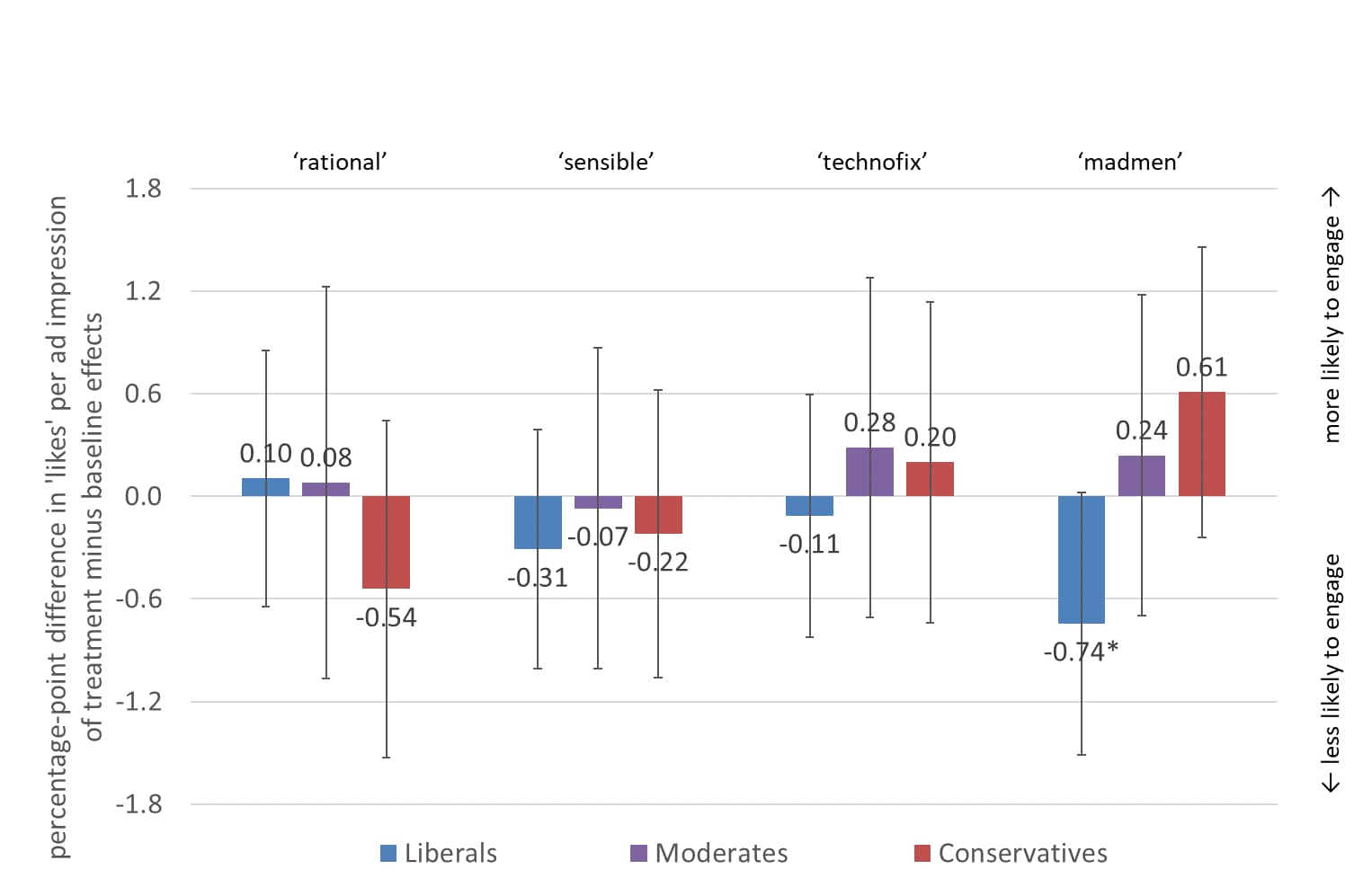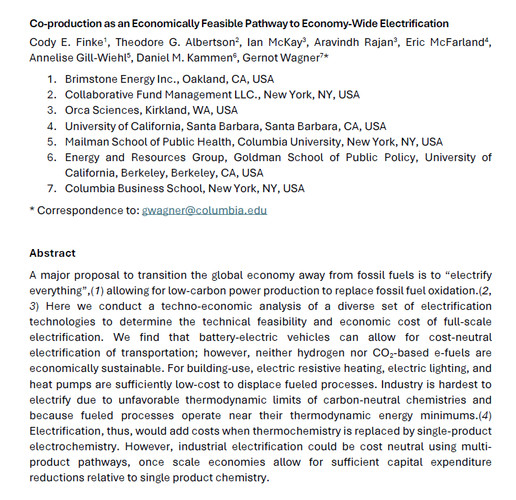Presenting balanced geoengineering information has little effect on mitigation engagement
by Christine Merk and Gernot Wagner

Abstract:
‘Moral hazard’ links geoengineering to mitigation via the fear that either solar geoengineering (solar radiation management, SRM) or carbon dioxide removal (CDR) might crowd out the desire to cut emissions. Fear of this crowding-out effect ranks among the most frequently cited risks of (solar) geoengineering. We here test moral hazard versus its inverse in a large-scale, revealed-preference experiment (n~340,000) on Facebook and find little to no support for either outcome. For the most part, talking about SRM or CDR does not motivate our study population to support a large U.S. environmental non-profit’s mission, nor does it turn them off relative to baseline climate messaging, except when using extreme messengers and framings. Our results indicate the importance of actors and reasoned narratives of (solar) geoengineering to help guide public discourse.
JEL Classification: Q54, Q58
Keywords: Geoengineering, moral hazard, mitigation deterrence, crowding out, crowding in
Full paper: "Presenting balanced geoengineering information has little effect on mitigation engagement" (Columbia CEEP Working Paper, CESifo Working Paper No. 10104; this version: 6 December 2023; published version)
Also see, e.g.: "Does discussing geoengineering derail climate action? New study puts it to the test" by Sarah DeWeerdt, Anthropocene Magazine Daily Science (30 January 2024).


